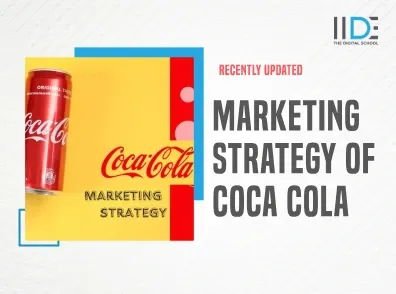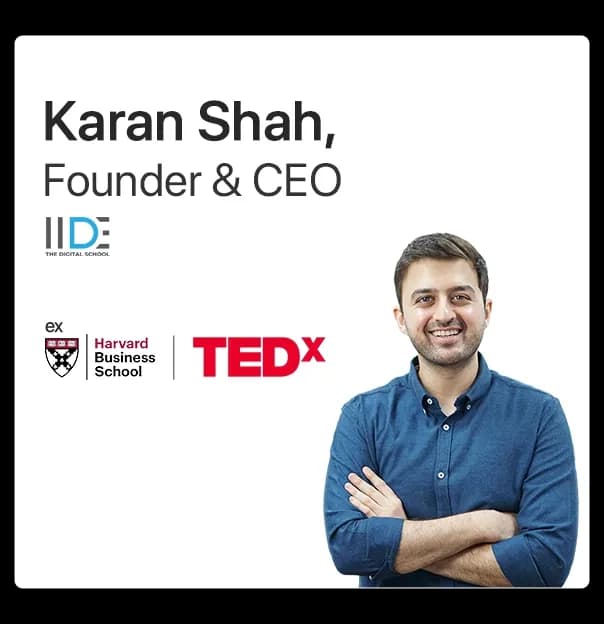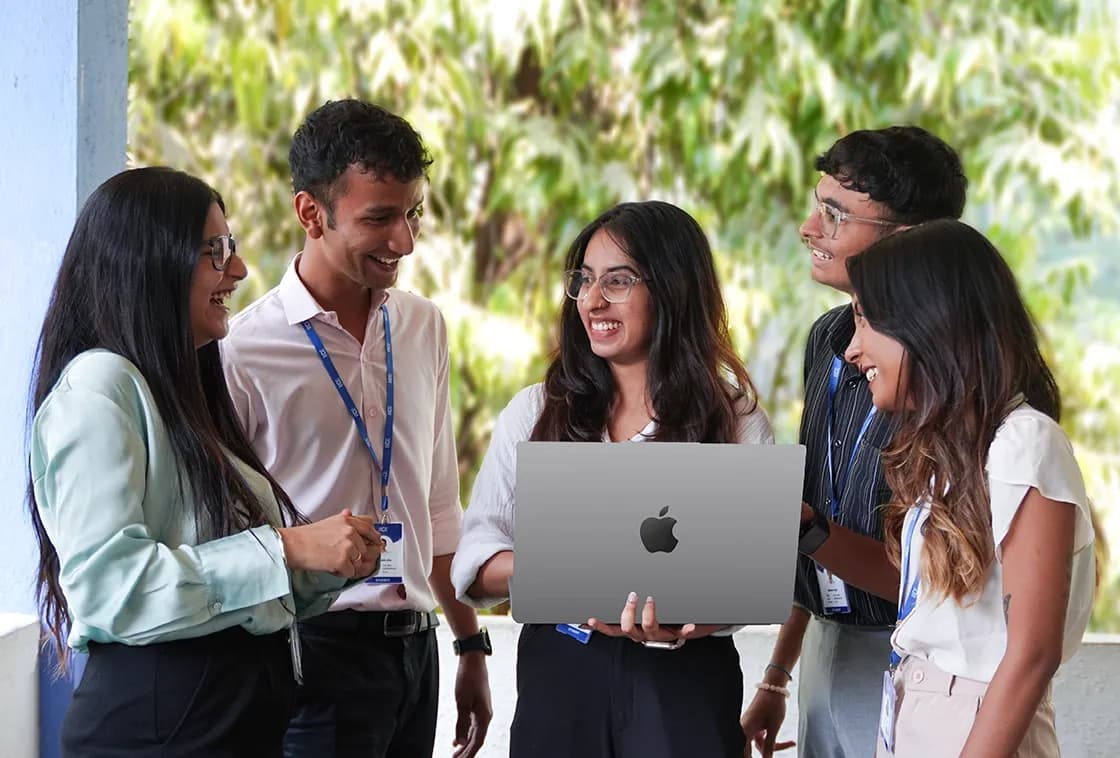
Updated on Apr 8, 2025
The marketing strategy of Coca-Cola focuses on building emotional connections with consumers through innovative campaigns, digital marketing, and strong social media engagement. The brand utilizes influencer partnerships, seasonal promotions, and cultural alignment to stay relevant globally. Coca-Cola’s ability to adapt to local preferences and trends while maintaining its iconic image has been key to its continued success.
In today’s competitive business landscape, a company’s marketing strategy is key in shaping its brand image and driving extensive growth. One of the most dominating and recognized companies in this regard is Coca-Cola. Known for its refreshing beverages and global presence, Coca-Cola’s marketing strategy has been a key factor in its enduring success. In this blog, we’ll dive deep into the marketing strategy of Coca-Cola, exploring the key tactics and approaches that have helped the brand maintain its position as a leader in the beverage industry.


Learn Digital Marketing for FREE
- 45 Mins Masterclass
- Watch Anytime, Anywhere
- 1,00,000+ Students Enrolled


About Coca-Cola

Since its inception in 1886 by Dr. John Stith Pemberton in Atlanta, Georgia, Coca-Cola has grown into one of the world’s most iconic brands. What began as a medicinal tonic has transformed into a global beverage phenomenon.
Coca-Cola has not only been a market leader in carbonated soft drinks but also a trusted name that spans various product categories, including Diet Coke, Coca-Cola Zero, Fanta, Sprite, and bottled water such as Kinley.
Coca-Cola has established a strong presence, operating in a competitive market and reaching consumers from all walks of life. Through effective distribution channels and strategic partnerships with local businesses, Coca-Cola has successfully penetrated both urban and rural areas.
Its consistent marketing efforts, understanding of culture, and ability to adapt to consumers' tastes have helped it maintain its leadership position in the beverage industry.
The brand’s marketing strategy is deeply rooted in building emotional connections with its customers. Coca-Cola has successfully integrated itself into the social fabric, aligning itself with celebrations, festivals, and family moments.
To stay ahead in this competitive landscape, one can look forward to digital marketing courses in Nepal.
What’s New With Coca-Cola
Coca-Cola, being one of the market leaders, always remains competitive to stay on the top.
1. Business News
Coca-Cola’s global revenue for Q4 2024 exceeded expectations. This growth came from markets like Mexico and Germany, balancing out the slight dip in the U.S. market.
2. Marketing News
- 'Coca-Cola Mahotsav' Campaign: In May 2024, Coca-Cola Nepal launched the 'Coca-Cola Mahotsav' campaign, offering discounts at various restaurants for combo meals that include Coca-Cola. This initiative aimed to enhance consumer engagement and brand visibility.
- 'Halftime' Campaign: Coca-Cola's 'Halftime' campaign encourages consumers to take breaks and enjoy simple moments of relaxation. This campaign aligns with global marketing strategies and has been tailored to resonate with consumers.
Want to create amazing campaigns like Coca-Cola? Our free digital marketing courses will lead the way to help you design one.
Digital Marketing Strategies of Coca-Cola
The marketing strategy of Coca-Cola blends a variety of digital tactics to keep the brand relevant and engaging. Let’s take a closer look at the strategies Coca-Cola uses to keep its audience coming back for more.
1. SEO Strategy
Regarding SEO, Coca-Cola knows how to make the most of its online presence in Nepal and globally. The brand focuses on optimizing its website and content so that when people search for beverages or the Coca-Cola brand, they’re met with helpful, engaging content.
This drives organic traffic and strengthens Coca-Cola's visibility online, ensuring that consumers can easily find what they’re looking for.
2. Social Media Marketing (SMM) Strategy
Social media is where Coca-Cola shines. Whether it’s Instagram, X (formerly Twitter), Facebook, or YouTube, Coca-Cola's marketing strategy thrives on keeping the conversation going with its followers.
The brand shares engaging videos, images, and interactive content that invites consumers to participate. This creates an active community where fans can connect with the brand, share their experiences, and even create content in response to Coca-Cola’s campaigns.
3. E-commerce Strategy
As e-commerce continues to grow, Coca-Cola has made sure to meet its consumers where they are online. Whether through partnerships with online retailers or its own digital platforms, Coca-Cola has made it easy for consumers to purchase their favorite products.
This approach allows the brand to enter the booming online shopping market, making it more convenient for consumers to get their hands on Coca-Cola products whenever and wherever they want.
4. Mobile App
In today’s mobile-first world, Coca-Cola has introduced a mobile app that brings all things Coca-Cola to consumers' fingertips. The app offers everything from product information and exclusive promotions to interactive games that enhance the overall experience.
Whether people are on the go or relaxing at home, the app ensures that Coca-Cola stays connected with its audience through personalized experiences.
5. Influencer Marketing Strategy
Coca-Cola has done a great job tapping into this trend in a world driven by influencers. By collaborating with influencers and well-known content creators who resonate with their target audience, Coca-Cola has extended its reach even further.
These collaborations help the brand connect with younger, more digital-savvy consumers, all while keeping its image fresh and relatable.
Marketing and Advertising Campaigns of Coca-Cola
Coca-Cola’s marketing strategy has been highly successful in engaging consumers and creating memorable experiences through various promotional campaigns.
These campaigns not only promote the brand but also align with local cultural events, keeping Coca-Cola at the forefront of the beverage market.
1. 'Chill N' Win' Campaign (2023)
As part of its marketing strategy, Coca-Cola launched the 'Chill N' Win' campaign in mid-2023, offering consumers the chance to try their luck and win amazing prizes such as smartphones and mobile recharges.
By checking under the bottle caps or peeling labels from specially marked bottles, participants could reveal unique codes to enter the contest.
This campaign had a significant impact, thanks to its widespread reach and the consumer engagement it generated across Nepal. It effectively showcased how Coca-Cola’s marketing strategy drives consumer interaction and excitement.
2. 'Coca-Cola Mahotsav' Campaign (2024)

In May 2024, Coca-Cola introduced the 'Coca-Cola Mahotsav' campaign as part of its ongoing marketing strategy in Nepal. Partnering with popular restaurants, Coca-Cola offered discounts on combo meals that included their beverages.
Participating eateries provided discounts ranging from 25% to 35%, enhancing the dining experience for consumers and strengthening Coca-Cola’s presence in Nepal's competitive food and beverage sector.
This campaign highlighted Coca-Cola’s ability to integrate with local food culture and elevate the consumer experience.
3. Dashain Festival Campaigns
Coca-Cola’s marketing strategy also aligns with major cultural events in Nepal, particularly Dashain. In 2021, Coca-Cola released a heartfelt commercial encouraging people to express gratitude by sharing a Coke during the festival, emphasizing togetherness and appreciation.
This year, in the third quarter of 2024, Coca-Cola continued this tradition with the 'Dashain Dhamaka' campaign, offering discounts on two-liter bottles.
This strategic move allowed Coca-Cola to stay relevant and foster a deeper connection with consumers during one of the most significant cultural periods in Nepal.
Buyers Persona:

Arjun Thapa
Kathmandu
Occupation: Marketing Executive
Age: 28
Motivations
- Enjoys refreshing beverages during work breaks.
- Seeks products that offer a sense of enjoyment and relaxation.
Interests & Hobbies
- Socializing with friends and colleagues.
- Exploring new beverage flavors and trends.
- Engaging with brands that have a strong cultural presence.
- Participating in events and promotions related to popular brands.
Pain Points
- Limited time during work hours for extended breaks.
- Desire for a quick, enjoyable refreshment during hectic workdays.
- Preference for beverages that align with a dynamic and social lifestyle.
Social Media Presence
- X (formerly Twitter)
Failed and Controversial Coca-Cola Campaigns
While Coca-Cola's marketing strategy has seen tremendous success in Nepal, not all campaigns have gone as planned. Here are a few campaigns that faced backlash or failed to resonate with consumers:
'Jigri' Campaign (2019)
Coca-Cola launched the 'Jigri' campaign in 2019. As a part of Coca-Cola's marketing strategy, the campaign featured a humorous ad where Nepali celebrities and influencers search for their 'best friend' (jigri), only to find out it’s a 250ml Coca-Cola bottle.
The Issue: While the campaign was meant to be light-hearted and fun, it quickly drew criticism due to its environmental impact. The promotional push for smaller 250ml Coca-Cola bottles resulted in an increased use of plastic, which raised concerns given Nepal's ongoing struggle with waste management and plastic pollution.
Backlash: Environmental activists and concerned consumers voiced their displeasure over the campaign, citing that it encouraged unnecessary plastic consumption at a time when sustainability should have been a priority.
Brand’s Response: Coca-Cola faced backlash on social media and traditional media outlets. While the brand did not immediately withdraw the campaign, it did focus on promoting recycling efforts in the country in the subsequent months, and a focus on eco-friendly initiatives became more apparent in their later campaigns. However, the Jigri campaign still left a bad taste in the mouths of many Nepali consumers.
Top Competitors
- PepsiCo: PepsiCo is Coca-Cola’s biggest competitor, offering a similar range of carbonated drinks, bottled water, and juices. Pepsi is known for its strong presence in the soft drink market and frequent promotional campaigns.
- Mirinda: Known for its orange soda, Mirinda is a key competitor in the non-cola segment. It is owned by PepsiCo and competes with Coca-Cola’s Fanta for market share in the fruity soda category.
- Mountain Dew: A product of PepsiCo, Mountain Dew is a competitor in the lemon-lime soda market and has a strong following, particularly among young, energetic consumers looking for an energy-boosting drink.
- 7UP: This lemon-lime soda, owned by PepsiCo, competes directly with Coca-Cola’s Sprite in the clear, citrus soda market. 7UP is widely available and is a popular alternative to Coca-Cola's offerings in the same category.
- Aquafina: Aquafina, a bottled water brand owned by PepsiCo, competes with Coca-Cola’s bottled water brand, Kinley. The growing demand for bottled water has made this market increasingly competitive.
Want to Know Why 2,50,000+ Students Trust Us?
Dive into the numbers that make us the #1 choice for career success


Online
Best For
AI Enthusiasts
Mode of Learning
Online
Duration
5 Months

Offline
Best For
12th Passouts
Mode of Learning
On Campus (Mumbai)
Duration
3 Years
Recent Post
Frequently Asked Questions
Coca-Cola's marketing strategy has evolved over the years from traditional media advertisements to a more digitally driven approach. The brand has embraced social media, influencer marketing, and interactive campaigns to stay connected with younger audiences, all while maintaining its iconic brand identity.
Coca-Cola focuses on building a strong emotional connection with consumers. The brand uses a combination of digital marketing, influencer partnerships, and innovative campaigns to engage with diverse audiences. Coca-Cola's marketing strategy includes initiatives like social media marketing, SEO, e-commerce, and seasonal promotions that resonate with local cultures.
The success of Coca-Cola's marketing strategy lies in its ability to stay relevant to different generations by combining tradition with modern trends. Its campaigns tap into universal emotions like happiness, sharing, and togetherness, while its innovative approach keeps the brand fresh and engaging.
Social media plays a crucial role in Coca-Cola's marketing strategy. The brand engages with consumers through platforms like Facebook, Instagram, and YouTube, sharing compelling content, videos, and campaigns that encourage interaction and foster a sense of community among fans.
In Nepal, Coca-Cola's marketing strategy includes festival-based campaigns like Dashain Dhamaka and promotions tied to local events. The brand also partners with Nepali restaurants and influencers to drive engagement and boost its presence in the market.
Coca-Cola's marketing strategy leverages influencer marketing by collaborating with popular figures from various fields, such as sports, music, and entertainment. These influencers help authentically promote Coca-Cola’s products, creating strong connections with their followers and amplifying the brand's reach.
Aditya Shastri leads the Business Development segment at IIDE and is a seasoned Content Marketing expert. With over a decade of experience, Aditya has trained more than 20,000 students and professionals in digital marketing, collaborating with prestigious institutions and corporations such as Jet Airways, Godrej Professionals, Pfizer, Mahindra Group, Publicis Worldwide, and many others. His ability to simplify complex marketing concepts, combined with his engaging teaching style, has earned him widespread admiration from students and professionals alike.
Aditya has spearheaded IIDE’s B2B growth, forging partnerships with over 40 higher education institutions across India to upskill students in digital marketing and business skills. As a visiting faculty member at top institutions like IIT Bhilai, Mithibai College, Amity University, and SRCC, he continues to influence the next generation of marketers.
Apart from his marketing expertise, Aditya is also a spiritual speaker, often traveling internationally to share insights on spirituality. His unique blend of digital marketing proficiency and spiritual wisdom makes him a highly respected figure in both fields.